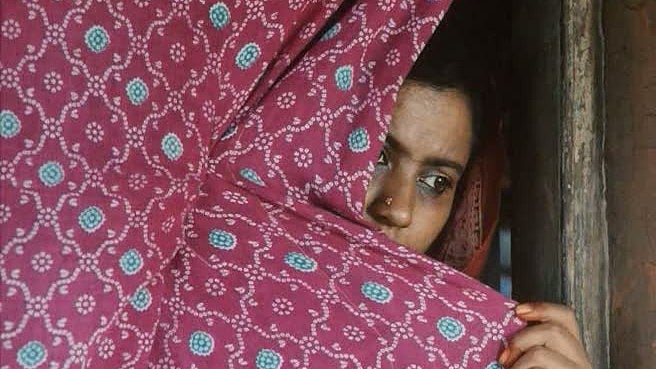
Credit: Special arrangement
‘Black Cobras’ (Karinagaragalu) is one among the 12 short stories from Banu Mushtaq’s ‘Heart Lamp: Selected Stories’ — the recipient of the International Booker Prize 2025. It is translated into English by Deepa Bhasthi.
Auteur Girish Kasaravalli adapted ‘Karinagaragalu’ into a film in 2004. Titled ‘Hasina’, it focuses on the themes of social justice and societal norms within the Muslim community.
When Kasaravalli was researching for a story, more suitable to depict the socio-economic and the political situation of the time, he came across Banu’s short fiction. He found visual and multilayered possibilities in ‘Karinagaragalu’. Kasaravalli’s film is the only film adaptation of Banu’s works.
In his award-winning film, Kasaravalli is not exaggerating the strength and vision of Banu’s works. He seeks answers to every form of violence — physical and emotional — through the Gandhian model of Satyagraha. The film was released at a time when saffronisation was becoming rampant in the country. Rational thinkers consider ‘Hasina’ as an important cultural intervention and an attempt to break the deep-rooted biases in a society grappling with Islamophobia.
Set in Karnataka’s coastal region, ‘Hasina’ follows the titular character (played by Tara), who marries auto driver Yakub (Chandrahas Ullal), against his mother’s wishes. After the birth of three daughters, including Munni, a visually impaired girl, Hasina gets pregnant once again. The couple defy societal norms and plan for a gender determination scan of the unborn child. Upon learning that it is another girl, Yakub abandons Hasina, leaving her to fend for herself. The story focuses on the various societal and familial challenges Hasina goes through, including the indifference of local maulvis and the community heads.
Upon its release, ‘Hasina’ received widespread acclaim for its realistic portrayal of a Muslim woman’s resilience in the face of adversity. The film’s strong emotional content and fast but patient narrative captivated a niche audience and won appreciation from critics.
Through the well-read character Zulekha Begum (Chitra Shenoy), Kasaravalli argues how religion becomes tyrannical only when institutionalised, even as solutions exist within it. Conversations with Zulekha changes Hasina’s perception about the contrived societal structure and emboldens her to seek justice. Hasina chooses the Gandhian method and sits in front of the mosque refusing to budge till justice is granted. Of course, she achieves victory in her fight against the system, at the cost of a sacrifice, with which she loses the reason for her struggle.
Though Kasaravalli chooses a linear narrative, he consciously adapted a multi-textured, sensitive and nuanced format. Of course, Hasina is not a complicated narrative in terms of storytelling; Kasaravalli raises several issues and exposes the society’s hypocrisy and power politics, besides how religion becomes tyrannical.
‘Hasina’ marked a notable departure from Kasaravalli’s usual filmmaking format. In an earlier interview with this author, Kasaravalli admitted that he wanted to experiment by constructing characters with clear moral binaries, a contrast to his typical nuanced portrayals. He viewed this stylistic shift as an opportunity to explore new narrative forms. ‘Hasina’ represents a significant experiment in Kasaravalli’s filmmaking journey, where he ventured to explore complex social issues within the specific cultural context. It can be undoubtedly said that Kasaravalli’s approach underlines the potential of cinema to initiate dialogue and reflection on societal norms and justice. ‘Hasina moves beyond superficial humanism to examine the law, justice and the crossroads between them, particularly within the context of the Islamic law.
He is backed by a competent crew —
S Ramachandra doing wonders with his camera and Thomas Issac’s background score sets the tone right for a song-less film. The distinct colour palette brilliantly conveys the film’s emotions.
Kasaravalli feels that Banu’s works haven’t been discussed enough by the Kannada literary world. With this award, he hopes her works will get more attention. He also notes that filmmakers didn’t pay much attention to her works.
Stories chosen to compile ‘Heart Lamp’ dwell on the themes, which are less known to the rest of the world in terms of narration, technique, characters, and context, as Banu accumulated experience as an activist, social worker, journalist and advocate. It is certain that Banu moved beyond the personal self, her thought process, and ideology, which has a touch of universality. Each of her stories is told through slightly different perspectives.
(The author is a senior journalist)